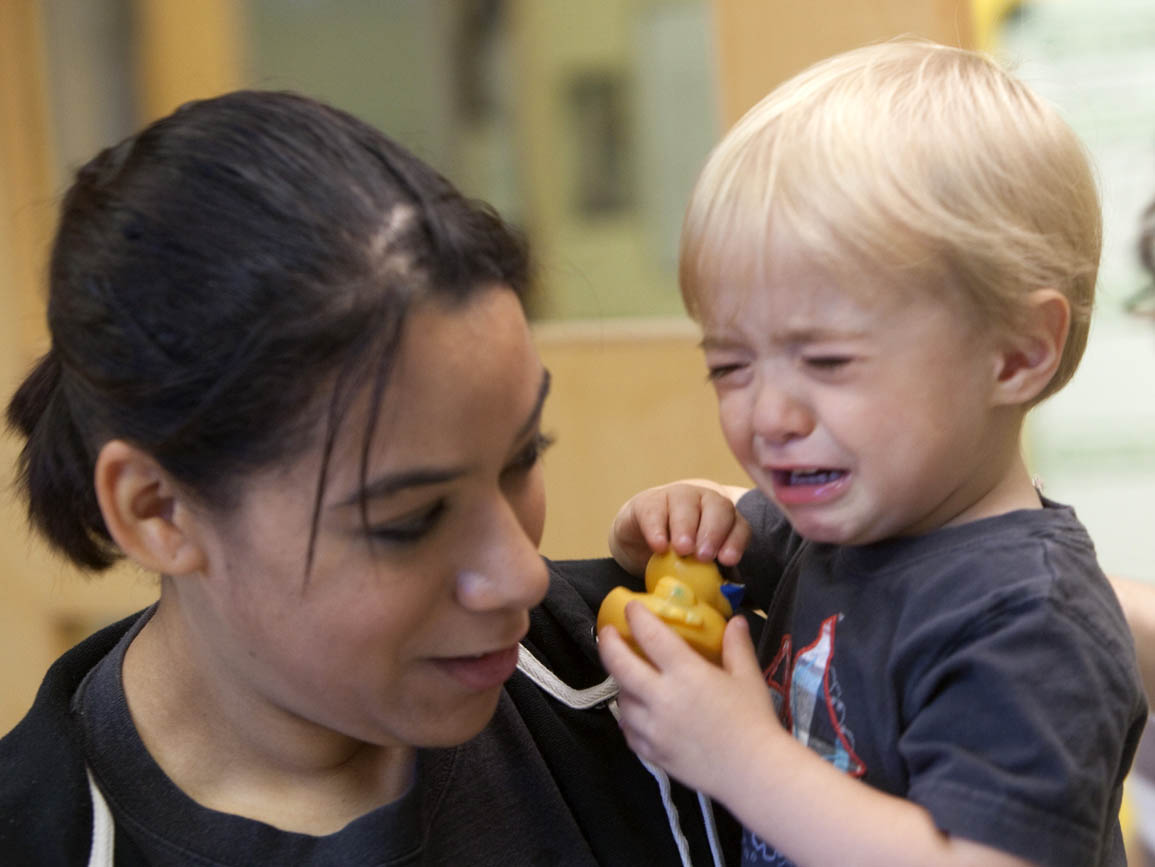Separation from someone we love can be painful both for children and parents, especially for those in a child care setting. Separation anxiety in children can come and go throughout their early years. Luckily there are some simple things you can do to reduce anxiety when leaving your child —at home or at child care.
The Importance of the Parent-Teacher Relationship
Since your provider is a close partner with you and your spouse in the daily care and education of your child, take the time to invest in this relationship—it can be one of the most important ones in your family's life. Talk to your caregiver each morning and at the end of the day if possible. Let them know how your child's night went, what her mood is, and if there are any unusual issues. At the end of the day, find out what your child enjoyed doing and learn about what the highlights or struggles of the day were.
How to Reduce Separation Anxiety in Babies
- Don't rush the separation. Your child will pick up on your stress and can become agitated.
- Sit with your child for a while so he can take in the activities and people in the room.
- When your child seems comfortable, let your caregiver take her. It's nice for her to be in a devoted caregiver's arms when you leave.
- Kiss and hug your child goodbye and then leave. Don't waver; that only becomes confusing to your infant.
- If your baby is crying when you leave, or even if he is not, don't hesitate to call your caregiver or center a little later to see how he is doing.
How to Reduce Separation Anxiety in Toddlers & Preschoolers
- Greet the caregiver and other children as you enter the room.
- Spend time helping your child into an activity before engaging in extensive conversation with the caregiver. Children love to interact with their environment, so involving him in a play activity will help him transition more easily.
- Let your caregiver know how your child is doing that morning and if there is any change in her schedule.
Tips for Daycare Drop-off
- Sit down and read one book with your child, then hug him and leave.
- Draw a picture with your child and let her keep it.
- Sit with your child while he engages in an activity with a friend. When he is fully engaged and settled, give him a hug and kiss and leave.
- Let your child hold a picture of the family or something of yours as you leave. This may feel like a secure connection to you.
- Have the caregiver bring your child to the window or door to wave goodbye while you leave.
Try to create a departure ritual that you follow each time you leave, whether it's at child care or at home. Soon this ritual will become familiar and your child will be comfortable with it. Let your caregiver help with the separation: signal when you are ready to leave and she can hold and comfort your child if she is crying. Again, while separation from someone we love can be painful, we can ease the pain by a thoughtful partnership with caregivers.
More on Child Anxiety
- Get tips for helping preschoolers with separation anxiety, especially when transitioning from one child care classroom to another.
- Many children go through separation anxiety when starting school. Read our parent blogger's experience as her daughter transitions into kindergarten.
- How do you help babies with stranger anxiety? Share and get ideas on our parenting blog.





